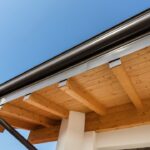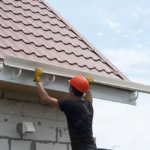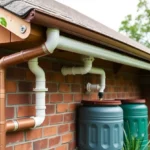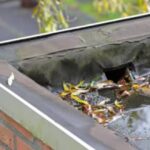In the world of home maintenance, one of the most pertinent questions that often arises is, does homeowners insurance cover roof leaks? As a homeowner, understanding your insurance coverage is crucial. Roof leaks can be a significant issue, potentially leading to further structural damage if not addressed promptly. In navigating this aspect of homeownership, we bring you a comprehensive overview of the factors involved in insurance coverage for roof leaks.

Understanding Homeowners Insurance Basics
Before diving into roof leaks, it’s essential to grasp the fundamentals of homeowners insurance. Typically, homeowners insurance is designed to protect against specific risks or perils. These might include fire, theft, or damages caused by certain weather conditions. However, not all types of damage are covered.
What Are Covered Perils?
Covered perils refer to the specific risks outlined in your policy that the insurer agrees to cover. Commonly, these include instances like hail storms, which could potentially cause roof damage. Understanding what falls under covered perils is the first step in determining if roof leaks will be covered.
The Role of Roof Condition in Insurance Coverage
The condition of your roof at the time of the leak plays a critical role in whether or not the leak is covered. Insurance companies often require that roofs be maintained in good condition, with regular maintenance to prevent leaks as much as possible.
Regular Maintenance Matters
Regular maintenance is your responsibility as a homeowner. Insurers expect you to perform necessary duties such as inspecting and repairing your roof. Neglecting this can lead to a denial of your claim.
Aging Roofs
Older roofs pose a different question in insurance claims. If your roof is nearing the end of its life span, an insurance adjuster may deem leaks as a result of neglect rather than a specific isolated peril. [Learn more about choosing the right roofing material.](blue)
Does Homeowners Insurance Cover Gradual Damage?
Gradual damage refers to issues that manifest over time, such as leaks occurring due to an aging roof. Generally, insurance policies do not cover damage recognized as wear and tear or failure to upkeep.
When Wear and Tear Aren’t Covered
If the leak stems from neglect over time, it often falls outside insurance coverage. This distinction helps insurance companies assess the responsibility of proactive maintenance.
When Do Roof Leaks Get Covered?
In some scenarios, roof leaks might indeed be covered. One such instance is if the leak was directly caused by a covered peril, like a tree falling during a storm.
Assessing the Cause
Insurance adjusters assess the root cause of the leak. If its a covered peril, the subsequent damage might be eligible for a claim. [Understand types of roofing that aid in protection.](blue)
Filing a Claim: The Steps Involved
Understanding how to effectively file a claim is the next key step. Prompt reporting and detailed documentation are vital components of this process.
Documenting the Damage
Take clear photographs and provide any bills or receipts for temporary repairs. This significantly supports the validity of your claim.
Communication with Insurers
Contact your insurance agent as soon as possible to report the leak and initiate the claim process. Provide them with all necessary information promptly.
Preventive Measures: Protecting Your Home
While insurance can be a safety net, prevention is always the best strategy. Routine inspections and timely repairs go a long way in maintaining roof health.
Conducting Regular Inspections
Conduct inspections bi-annually or after significant weather events to catch and rectify minor issues early on. [Find tips on selecting a roofing company.](blue)
Learning From Others: Case Studies
Examining real-life examples can offer insight. Case studies show how similar claims have been treated, offering expectations and possible outcomes.
Successful Coverage Cases
Some homeowners have managed to secure coverage for their roof leaks by presenting compelling evidence of the damage caused by covered perils.
Denial Scenarios
Maintenance neglect has often led to denied claims. Consistent neglect undermines the likelihood of positive claims outcomes.
Conclusion: Oversee Roof Health Proactively
In conclusion, whether homeowners insurance covers roof leaks depends significantly on the causes of the leak and the maintenance of the roof. By understanding your policy’s covered perils, conducting regular maintenance, and documenting everything effectively, you can navigate claims more successfully.

FAQ Section
1. How do I know if my roof leak is covered?
Check your insurance policy’s details regarding covered perils and consult with your insurance agent.
2. What repairs can I make myself before claiming?
Temporary repairs to prevent further damage can be made, but be sure to document them for your claim.
3. Are there specific policies that include gradual damage?
Some comprehensive policies may offer expanded coverage, but these are exceptions and often at a higher premium.
This article contains affiliate links. We may earn a commission at no extra cost to you.







